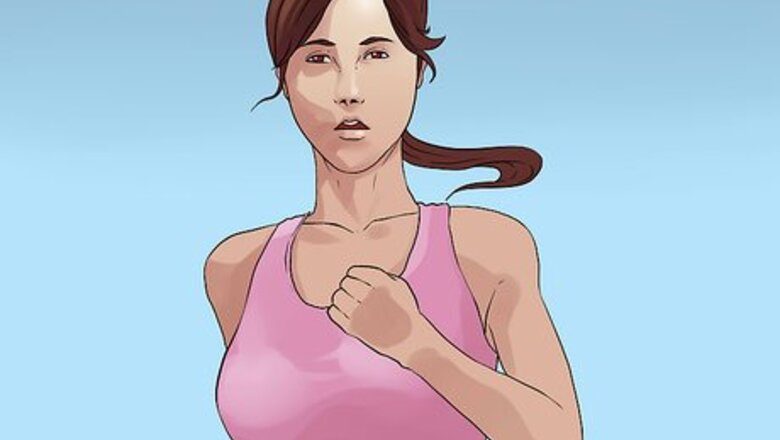
views
Stretching
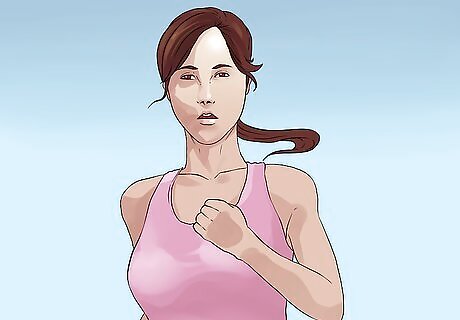
Warm up. Warm your muscles up with some brief cardio like running, jumping rope, or doing jumping jacks. It’s important to warm up your muscles before stretching to avoid strain and potential injury. You'll get more of a stretch if you warm up prior, because the added blood flow to the muscles will help them naturally loosen up a bit.
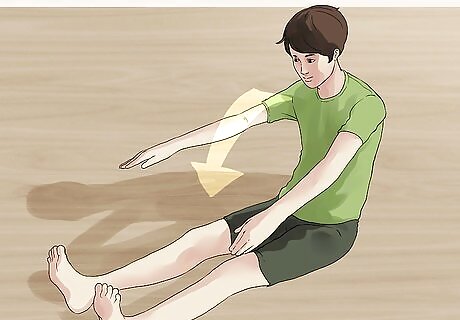
Stretch your hamstrings. Before trying to touch your feet to your head, stretch your hamstrings to avoid straining them. Sit upright on the ground with your legs held straight in front of you. Slowly bend forward at the waist, keeping your back straight. Extend your hands and reach for your toes. If you can’t reach your toes, try touching your ankles or perhaps your knees. Move your extended legs out so that they’re about shoulder width distance apart. Repeat bending forward and reaching for your toes (or ankles or knees).
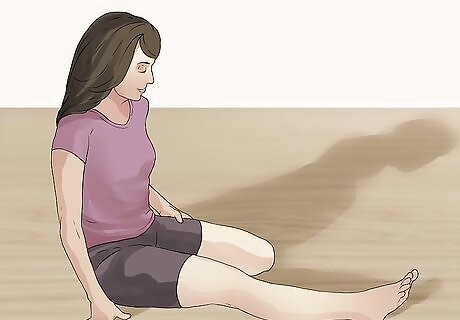
Stretch your inner thighs. Begin by sitting on the ground with your legs extended in front of you. Bend your right knee and bring your right foot inward towards your pelvis. Slowly bend forward at the waist, keeping your back straight. Extend your left hand towards your left foot; try to touch your toes. If you can’t reach your toes, try to touch your ankle or your knee. Repeat each step on the left side.

Stretch your back. Warm up your back with some gentle stretches so you don’t strain it. Start on your hands and knees and slowly drop your head and pull your back up into an arch. Hold for several seconds. Drop your stomach, lift your head, and pull your back downward into an inverted arch. For the next stretch, lie on your back with your knees bent and your feet on the ground. Keeping your back on the ground and your legs bent, slowly lower your knees to the ground on your right. Move your legs back into a neutral position. Repeat the stretch on the left side.
Touching Your Feet to Your Head from Laying Position
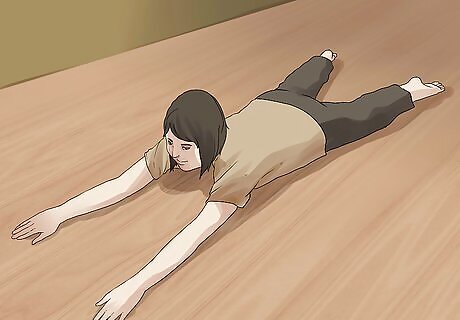
Get into starting position. After stretching your back and legs, you can begin the process of touching your feet to your head. Lie flat on your stomach, arms extended forward and legs extended behind you.
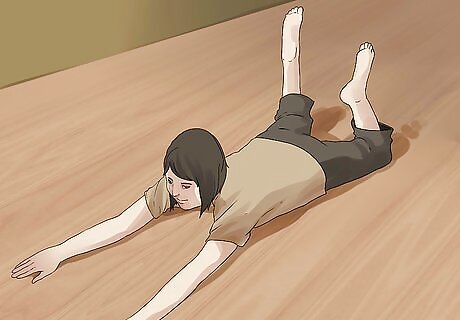
Raise your legs. Do this step slowly and gently--don’t rush. Slowly bend your knees and raise your feet until your legs are bent upward behind you.
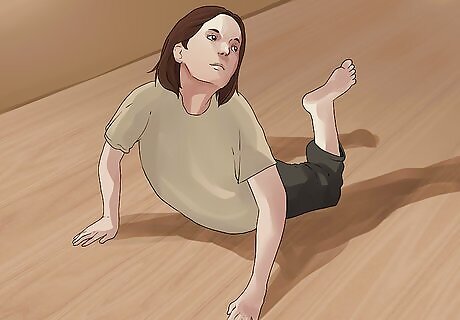
Raise your chest. Again, perform this movement slowly. If you feel any pain, stop immediately. Lift your chest and raise yourself up on your elbows. You should be lying on your stomach, resting on your elbows with your legs bent upward at the knee.
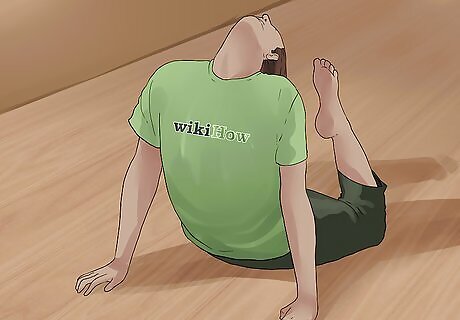
Lift your chest and arch your back. At this point, only go as far as you comfortably can. If you begin to feel pain or strain, stop immediately and gently return to a neutral resting position. Lift your chest and draw yourself up onto your hands. Slowly arch your back and reach your head backward as far as you can.
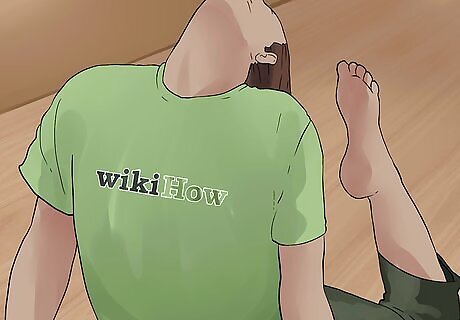
Touch your feet to your head. Don’t force your body to go any further than it’s capable of or comfortable with or you could injure yourself. Draw your feet forward and upward towards your head. Arch your back and extend your head behind you until you feel your feet touch your head.
Touching Your Feet to Your Head from Standing Position
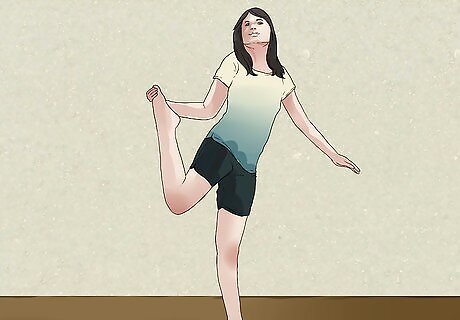
Balance on one leg. Start in a standing position, then bend one leg behind you while balancing on the other. Reach behind you and grab a hold of your raised foot.
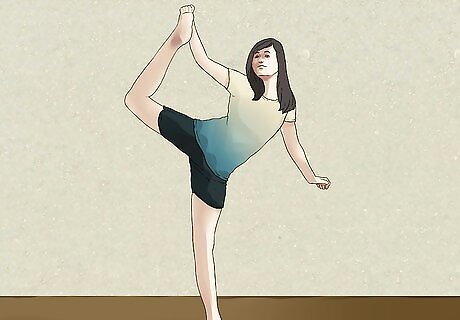
Pull your foot towards your head. While grasping your raised foot, arch your back and begin gently pulling your foot towards your head. If you feel any pain or discomfort at this point, stop. Going further could result in strain or other injury.

Touch your foot to your head. While pulling your foot towards your head, continue arching your back. Pull your head back until you feel it touch your foot. This will require good balance to accomplish. If you’re having trouble maintaining your balance, do some balancing exercises before trying again.
Touching Your Feet to Your Head from Handstand Position
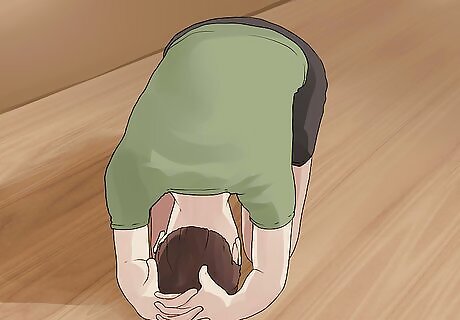
Begin on your hands and knees. From that position, place one forearm flat on the ground. Adjust the position of the other hand by moving it back until the heel of your hand is directly across from where the elbow of your opposite arm is resting. Touching your feet to your head from a handstand position is a very advanced technique that you should only attempt if you have advanced levels of strength, flexibility, and balance. Alternatively, a less demanding strategy is to start on your hands and knees close to and facing a wall, then lower yourself onto both forearms.

Kick your feet into the air. Kick your feet up above your head until you can find your balance. You’ll be in a modified handstand position, with your feet in the air and your weight resting on your forearm and on your other hand. Alternatively, you can do this next to a wall so that when you kick your feet over your head, your feet will hit the wall, helping you keep your balance. You’ll be in forearm-stand position with your feet above you, resting on the wall.
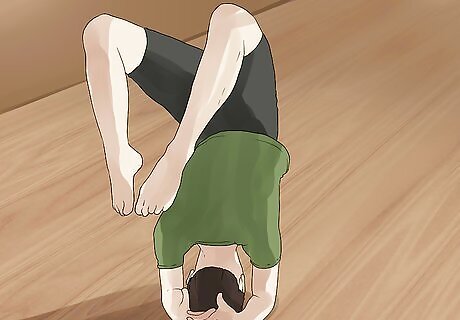
Slowly lower your feet to your head. Once you’ve found your balance in the modified handstand position, bend your legs at the knee so that your feet begin moving towards your head. Arch your back and gradually lower your feet until you feel them touch your head. You can pull your head back slightly to meet them. Alternatively, you can use a wall as a brace while you slowly lower your feet towards your head. Bear in mind that this is an extremely advanced position that takes a great deal of practice to accomplish.



















Comments
0 comment